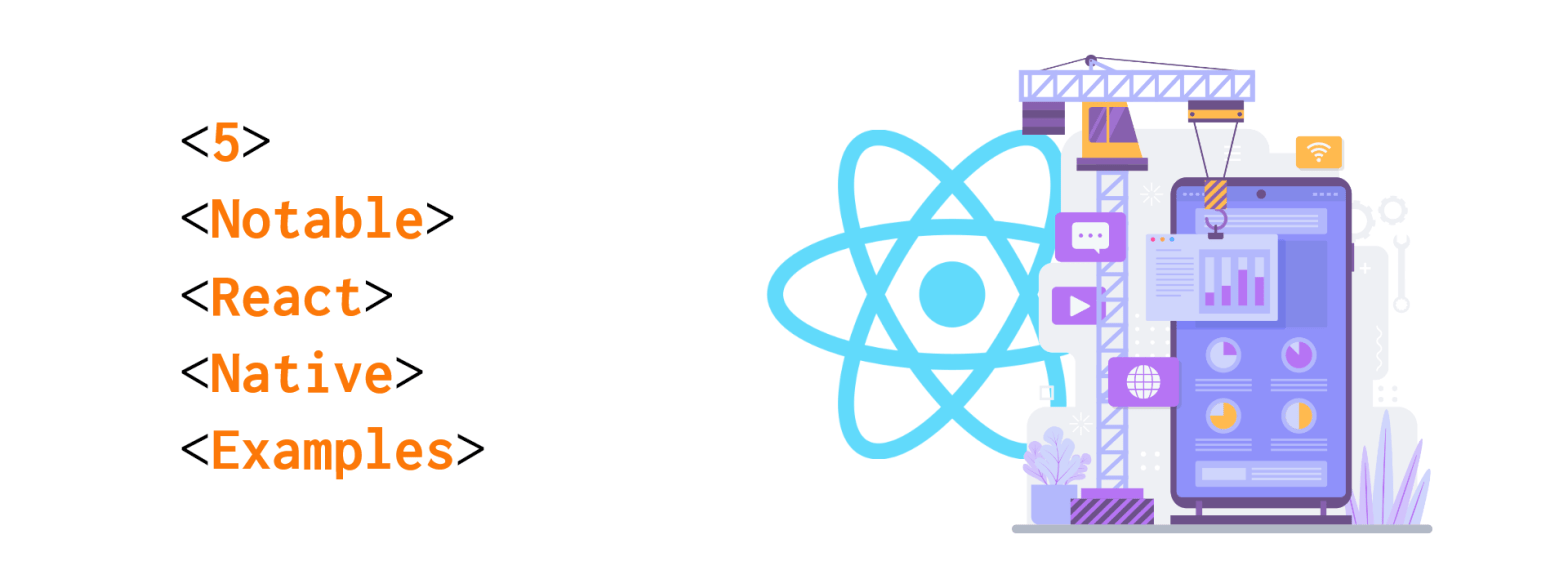
5 Apps that are Excellent React Native Examples
![]() Amit Tawar
Amit Tawar
Published: 12 Oct, 2022
The year 2015 proved revolutionary for businesses and startups wanting to reach their customers and users through mobile apps. With React Native, it was possible to build both Android and iOS mobile apps using a single codebase. Thus accelerating development, making it economical, and reducing maintenance costs.
The arrival of React Native mobile app development framework allowed seamless development of cross-platform app development. More so because development in React Native is done using JavaScript – which was already, and is still now, the most widely used programming language for the web.
Our React Native app development company, Netmaxims, has delivered numerous world-class react native apps over the years. Our clients often ask why they should choose React Native and what companies are using it. In this blog, our team has curated React Native examples to showcase the potential of this framework.
But before that, here is a brief on React Native – in case you don’t know about it.
Table of contents
What is React Native?
React Native is an open-source mobile app development framework that is written in JavaScript. It was built by Meta (earlier Facebook) to allow developers to build Android and iOS apps using a single codebase.
Building React Native was just an experimental initiative by Facebook because when it first decided to take its social networking platform into application format, it was built on HTML5. As a result, the Facebook app failed to render an optimized UI/UX and lacked in terms of performance. In fact, in 2012, Mark Zuckerberg himself admitted that “the biggest mistake we made as a company was betting too much on HTML as opposed to native”.
In 2013, Jordan Walke, who was the creator of the JavaScript Library, discovered a method of UI elements for iOS apps using JavaScript. This increased his curiosity, and a special Hackathon project was organized to explore the possibilities of mobile app development using JavaScript. And this is how React Native came to being.
Before the advent of React Native framework, the developers used HTML5, Javascript, and Cordova, along with other solutions, to build cross-platform mobile apps. It was not the most viable way of developing mobile apps for the following reasons:
- Limited customization
- Lacked native look and performance
- Consumed a huge amount of resources, time, and energy
Therefore, it was high time for developers to develop a new alternative option that curbed all these problems, and the development of React Native framework was the answer.
- Acted as a one-stop-solution for mobile app developers to build mobile apps
- Enabled frontend developers to build production-ready robust mobile apps
- Saves a huge amount of resources, time, and energy
Top React Native Examples
Inevitably, owing to the endless benefits of React Native as compared to its predecessor, the idea of switching to this holistic JavaScript framework seemed like a wise decision. And our mobile app development company couldn’t agree more.
React Native has transformed developers’ approach to mobile app development, and that too for all the right reasons.
Don’t believe us? Well, read the examples below to witness how some of the most innovative businesses are using React Native:
1. Tesla
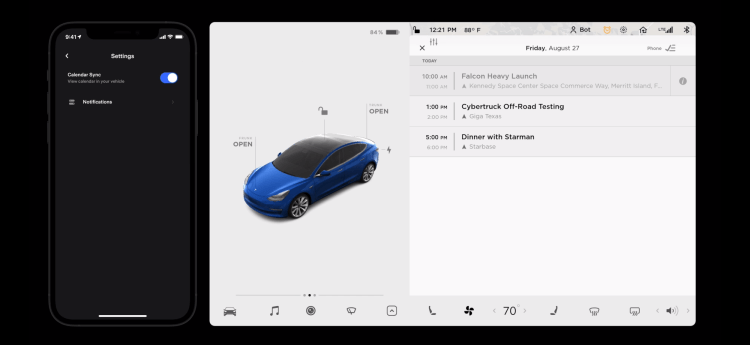
Tesla is one of the biggest consumers of React Native framework. The high-tech electrical automotive Tesla mobile app, which is exclusively designed to control cars with a smartphone, is built on React Native.
The dark-themed app, for both Android and Apple users, enables the users to remotely access their vehicle to lock, unlock, and manage climate controls and software updates. The app even allows the user to defrost the vehicle directly from the app when the weather conditions are cold.
In fact, the entire infotainment system, touchscreen, and window switch of the Tesla cars are helmed by React Native framework. Not only this, the vehicle owner can also keep track of their charging history, savings, and charging costs with the help of the charge stats feature.
All these features and more allow Tesla app developers to render a more intuitive experience to their users, all because of the React Native framework.
2. Bloomberg
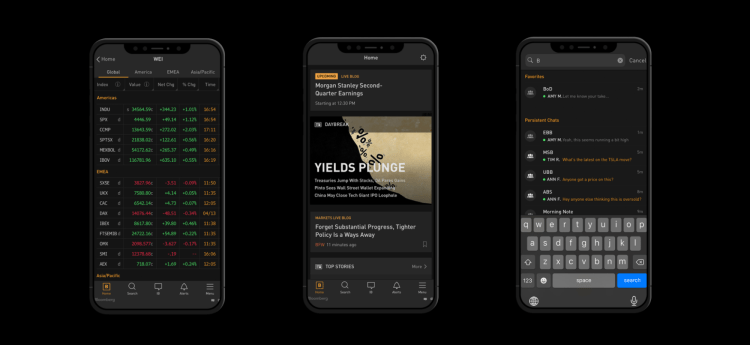
Bloomberg is the world’s leading provider of financial news, information, and data. It launched its mobile app for iOS and Android in 2016. The mobile app lets users have streamlined and easy access to interactive content, videos, and live feeds.
The cross-platform app built by Bloomberg is on React Native open-source framework. With the help of React Native, the developers were able to build an app that renders an enriching user experience with its enhanced UI/UX with the help of React Native.
Before their development team was introduced to React Native, their teams “would have developed the iOS and Android versions in parallel without being able to share most of the code they wrote, leading to delays and repetition,” explains Gabriel Lew, senior software engineer at Bloomberg.
3. Wix
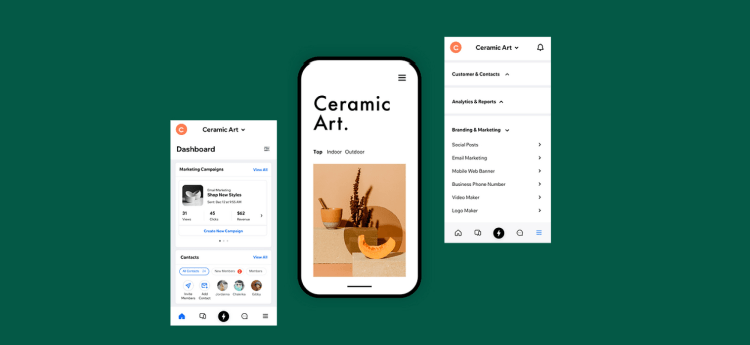
Wix is a platform that offers no-code website-building services to its users. The platform’s mobile application allows users to manage and stay connected with the website’s visitors all the time.
Wix mobile app was written in React Native from scratch. Writing an app in this JavaScript framework allows its developers to be efficient, have faster time-to-market velocity, and grow at a faster pace, as there are fewer developmental hindrances.
4. SoundCloud
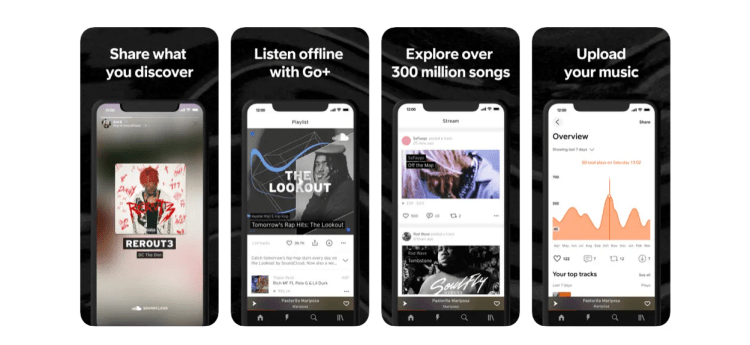
SoundCloud is an audio-streaming platform that supports creative content from millions of artists, podcasters, and sound creators. Every minute, about 12 hours of content is published on the platform from over 175+ countries.
The developing team of SoundCloud wanted to build an app that could handle huge traffic and is compatible with Android and iOS devices. Hence, they veered toward React Native framework to build their very own React app.
5. Walmart
Walmart is the world’s largest online retailer. With its strong presence across the globe, the online retail platform is always one step ahead of its contemporaries in terms of utilizing world-class technologies to enhance its customers’ experience.
Therefore, after witnessing the growing popularity of React Native applications and testing its applicability on their Walmart mobile application, they re-wrote their mobile app in React Native.
The switch not only improved their app’s overall performance but helped them in rendering a more user-friendly interface and smooth animations to its users.
React Native Version 0.70
On September 5th, 2022, the software development team at Meta released a new version of React Native mobile app development framework, version 0.70.0.
React Native version 0.70 was introduced with new improvements and updates, such as unified configurations for Codegen, and Hermes as the default engine. It even offers full CMake support for Android mobile app development using React Native framework.
New Features and Improvements
Let’s discuss some of the new features which will benefit React Native app developers launched in this latest version of React Native 0.70:
Hermes As The Default
It is the latest addition to the entire React Native framework and will add a lot more value to the React Native application development. It is especially beneficial for resource-constraint devices, therefore, facilitates setting up app start-up.
With the help of this default and precompiled bytecode, the developer will have to spend less time and energy while developing React native apps.
New Architecture’s New Documentation
This new documentation will act as a guideline for React Native app developers while building mobile apps using this framework. It offers new migration guides, examples, and tutorials, which act as a holy grail for the React Native app development team.
New Unified Configuration For Codegen
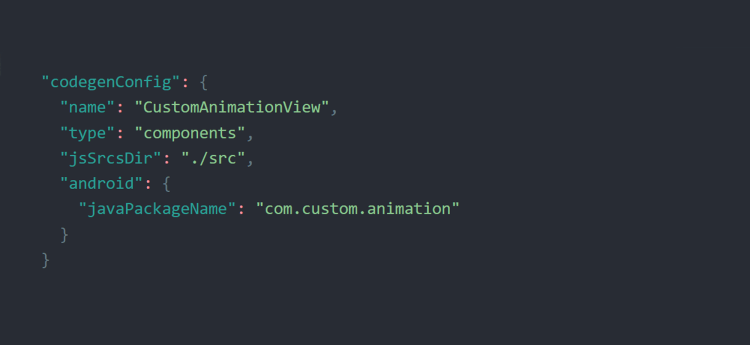
Previously, the React Native app developers used to put Android configuration in a different build.gradle file, but with Codgen’s unified configuration, they can do the same directly in the package.jason with:
Android Auto-Linking for New Architecture Libraries
In this version 0.70, the mobile app developers can link their libraries hassle-free without performing additional configurations on Android.mk or CMake files.
It is one crucial addition as now React Native mobile app developers can include external libraries with a single command without the need for CocoaPods or Gradle setups.
CMake Support for Android Builds
React Native app developers can now use CMake for their configuration purposes. From now mobile app developers can use a CMakeLists.txt file instead of an Android.mk file for anything Android/Native related in your project.
Our Experience in Building React Native App
One of our recent and successful projects has been uSpeek the communication Coaching App. It is an AI-assistive coaching app to help people improve their communication using personalized reporting on body language, vocal tone, and word power. We used React Native to ship a visually aesthetic and slick cross-platform mobile app. To read more about our experience and challenges while developing apps, head to our case studies section.
Copyright © 2023 NetMaxims Technologies Pvt. Ltd.
All Rights Reserved














